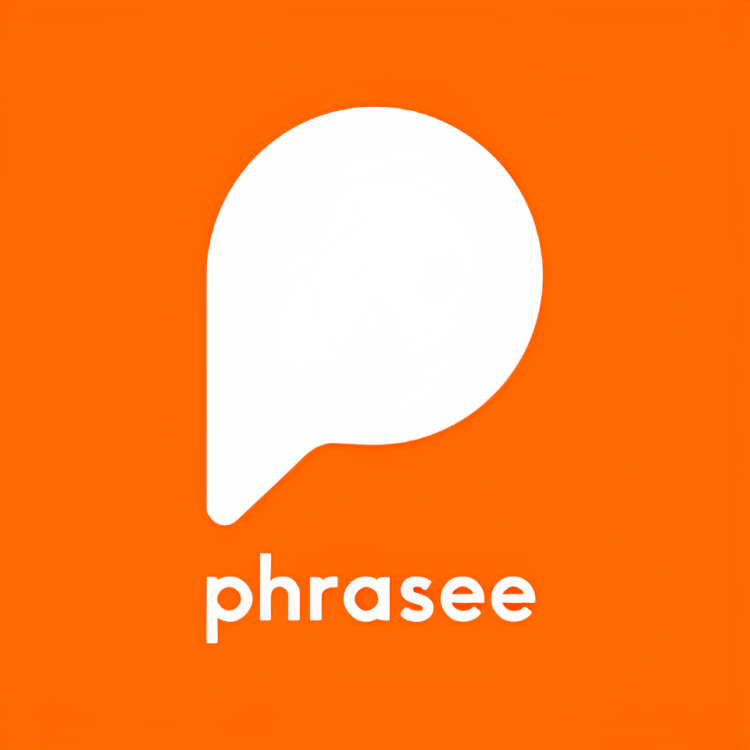AI Ads: How AI Will Revolutionize Digital Advertising in 2023
Artificial Intelligence (AI) is a groundbreaking new technology that has recently improved to the point that is now easily accessible to consumers.
Even in its present early stage, AI holds immense power and utility, especially when it comes to assisting the generation of content, as in AI ads.
AI has the potential to significantly enhance outcomes in the creation and analysis of Google ads, revolutionizing advertising practices.
To learn more about recent breakthroughs and the potential of AI to improve your Google Ads initiatives, read below:
3. AI Tools You Can Use Right Now
4. Integrating AI Tools into Your Business
If you’re concerned about the implications of AI, or you want more information on how AI ads function within the larger digital marketing ecosystem, contact us at HomeRank Ads today. With years of experience in standard marketing as well as new AI content, we’d be happy to help you grow your business.
Overview of AI Ads in 2023
1. How Does AI Work?
Industrial automation was the precursor to AI-driven tasks.
In general, artificial intelligence operates by collecting vast amounts of data and utilizing advanced algorithms to analyze and interpret that data. By learning from patterns and trends, AI can generate insights and make predictions that aid in optimizing ad campaigns (for greater detail, check out this great article by Built In).
These insights and predictions can be fused with language processing to explain results using conversational speech, making the barrier to entry so low that the average consumer can usefully interface with it.
One of the most famous examples of approachable AI software is ChatGPT, although many other platforms are available in a similar creative space, such as Midjourney and Synthesia.
Understanding the basic framework that makes AI tick is crucial to being able to develop your own AI ads and combine them with your Google Ads efforts.
2. What Can AI Do For Me?
AI shines when it comes to generating content ideas or finding trends in huge data sets.
AI excels at various tasks that can bolster advertising efforts through Google Ads.
Here are four key areas where AI is particularly helpful:
Ad Creation and Personalization
AI algorithms can analyze consumer data, preferences, and behaviour to generate tailored ad content that resonates with specific target audiences. This personalization improves engagement and conversion rates.
If you’ve used Google Ads before, you may have noticed that Google already offers algorithmically generated suggestions to improve your ads.
Ad Targeting and Optimization
Leveraging AI, advertisers can identify and target the most relevant audience segments based on their characteristics, interests, and online behaviour. AI-powered optimization techniques can inform bid management, ad placement, and budget allocation for optimal results.
Performance Analytics
AI tools enable advertisers to gain comprehensive insights into the performance of their Google ad campaigns. By analyzing metrics such as click-through rates, conversions, and audience demographics, AI can identify patterns and trends, helping marketers make data-driven decisions and refine their strategies.
Fortunately, Google makes it easy to download your Google Ads data so that you can process it however you like.
Ad Copy Testing and Optimization
AI algorithms can generate new content that you can try incorporating into your ads, letting you easily begin content-based A/B testing on AI ads that you’ve generated.
A/B testing is a common practice in advertising media whereby multiple variations of similar ads are analyzed to determine which elements generate the best response. This iterative process enables advertisers to optimize ad content continuously for improved effectiveness.
3. AI Tools You Can Use Right Now
If you want to get started creating AI ads today, there are already several popular and accessible pieces of AI-based software that can assist advertisers in enhancing their online advertising efforts.
Here are four noteworthy examples of tools that can enhance your Google Ads:
Google's Smart Bidding
This AI-driven feature within Google Ads leverages machine learning to optimize bidding strategies automatically. It uses historical data, contextual signals, and user behaviour to deliver more relevant and effective ad placements to Internet users.
AdEspresso by Hootsuite
AdEspresso utilizes AI algorithms to automate the creation and testing of multiple ad variations. It streamlines the process of optimizing ad campaigns across different platforms, including Google Ads.
Phrasee
As an AI-powered copywriting tool, Phrasee helps advertisers generate compelling ad content by making predictions based on your audience and developing follow-up content by analyzing which techniques work best. Perfect for A/B test assistance.
Trapica
Trapica is an AI-based online platform that specializes in optimizing digital advertising campaigns, including Google Ads. It uses advanced machine learning algorithms to analyze data, predict performance, and automate campaign optimization. Trapica is great for learning more about the audience that’s engaging with your advertising.
4. Integrating AI Tools into Your Business
Integrate AI tools slowly into your regular business practices to see if it’s a fit for your organization.
Embracing AI technology and leveraging its powerful tools can provide significant advantages in enhancing your advertising efforts through Google Ads.
Here are some key steps to consider when starting to integrate AI into your business:
Identify Business Objectives: Begin by clearly defining your business objectives and advertising goals. Determine the specific areas where AI can make a positive impact, such as ad personalization, audience targeting, or campaign optimization. This will help you align AI integration with your broader business strategy.
Educate Yourself and Your Team: Familiarize yourself and your team with the fundamentals of AI technology and its potential applications in advertising. Stay updated on the latest AI trends, tools, and best practices through industry publications, webinars, and workshops. Building knowledge and expertise will facilitate effective decision-making and implementation.
Assess Data Availability and Quality: Evaluate the availability and quality of your existing data. AI relies on large volumes of high-quality data for accurate analysis and insights. Identify potential data gaps or areas for improvement, such as data collection methods or data cleansing processes, to ensure that your AI initiatives have a solid foundation.
Start with Accessible AI Tools: Begin by exploring accessible AI tools and platforms that align with your advertising goals. Consider tools like Google's integrated Smart Bidding or AdEspresso, which offer user-friendly interfaces and robust AI capabilities. Experiment with these tools on a smaller scale to gain hands-on experience and understand their impact on your ad campaigns.
Collaborate with AI Experts: Seek collaboration with AI experts, data scientists, or agencies specializing in AI-driven marketing. Their expertise can guide you in selecting the right AI tools, developing AI ads solutions that fit your business needs, and providing valuable insights on implementation strategies.
Test and Optimize: Implement AI gradually and conduct rigorous testing to measure its effectiveness. Experiment with different AI-driven features, such as automated bidding or ad copy testing, and compare the results with your traditional advertising methods. Continuously analyze and refine your AI strategies based on performance data and insights gained.
Ensure Ethical AI Practices: Prioritize ethical considerations throughout the AI integration process. Address issues such as data privacy, algorithmic bias, and transparency in data usage. Regularly monitor AI algorithms for unintended consequences and potential biases, and make adjustments as necessary to ensure fair and responsible advertising practices.
Encourage Collaboration between AI and Human Expertise: Remember that AI should augment human decision-making rather than replace it. Foster a collaborative environment where AI technology and human expertise work together synergistically. Human judgment, creativity, and critical thinking remain essential in guiding AI-driven strategies and maintaining a balance between automation and human touch.
By following these steps, you can lay a strong foundation for integrating AI technology and tools into your business's advertising practices.
The iterative process of learning, testing, and optimizing will help you harness the full potential of AI, drive better advertising outcomes, and stay ahead in the dynamic digital advertising landscape.
5. Advantages & Limitations
Despite incredible recent advances, AI still has some significant drawbacks.
While AI offers significant advantages for digital advertising, it is essential to acknowledge its limitations and adhere to best practices. Here is a summary of some important considerations:
Advantages of AI Usage:
Enhanced audience targeting and ad personalization capabilities.
Trend analysis can be used to improve ad performance and conversion rates.
Data-driven insights lead to informed decision-making.
Some tools provide automated and efficient campaign optimization, although at present, fully automated ad campaigns can’t fully replace human-designed ads.
Limitations of AI Usage:
AI algorithms require proper training and setup for optimal results.
Overreliance on AI ads can suppress human creativity and lead to generic content.
Ethical concerns regarding data privacy and algorithm bias.
Constant monitoring and adjustment are necessary to prevent AI from generating suboptimal outcomes. Working with a professional Google Ads company is a great way to solve this issue.
Overall, AI ads are a great new tool added to the belt of the expert internet advertiser, but they require careful guidance and a healthy balance with human input.
6. Ethical Concerns Around AI
For ethical reasons, it’s essential we don’t lose the human touch in the work we do.
While AI technology offers immense potential for enhancing advertising through Google Ads, it is crucial to acknowledge and address the ethical concerns associated with its use.
Here are some key considerations:
Lack of Fact-Checking and Accountability: AI algorithms primarily rely on data inputs and patterns to generate insights and make decisions. However, this reliance can lead to the propagation of misinformation or biased information if the data used is flawed or biased. AI may not possess the ability to fact-check or verify the accuracy of the information it processes, highlighting the importance of human oversight and critical evaluation of AI-generated content.
Algorithmic Bias and Discrimination: AI systems are trained on historical data, which may reflect biased human decisions and societal prejudices. Consequently, AI algorithms can inadvertently perpetuate or amplify biases, leading to discriminatory outcomes. Advertisers must be cautious and ensure that AI-powered ad campaigns do not discriminate against certain demographics or perpetuate stereotypes.
Lack of Originality and Creativity: While AI can assist in generating ad content, there is a concern that it may lack the originality and creativity that come with human ingenuity. Advertisements generated by AI may lack the emotional depth or nuanced messaging that can be crafted by human marketers. Striking a balance between AI-generated content and human creativity is essential to maintain authenticity and resonate with target audiences.
Data Privacy and Security: The use of AI in advertising involves the collection and analysis of vast amounts of consumer data. This raises concerns about data privacy and security. Advertisers must prioritize safeguarding personal information, ensuring compliance with relevant privacy regulations, and being transparent about data collection and usage practices.
Unintended Consequences and Automation Bias: Overreliance on AI algorithms can lead to unintended consequences and automation bias. Blindly trusting AI recommendations without human judgment and critical evaluation can result in suboptimal decisions or missed opportunities. Human oversight and intervention remain crucial to ensure that AI systems are working towards their intended goals and aligning with ethical principles.
Addressing these ethical concerns requires a thoughtful and responsible approach to the implementation of AI ads.
Advertisers should prioritize transparency, accountability, and fairness while actively working to mitigate bias, maintaining human involvement in decision-making, and upholding ethical standards throughout the AI-driven advertising process.
Conclusion
In conclusion, AI technology presents a transformative opportunity for enhancing advertising through Google Ads.
By understanding how AI ads function, leveraging AI in various tasks, and utilizing accessible AI tools, advertisers can unlock the full potential of their digital marketing campaigns.
While embracing the advantages AI offers, it is crucial to remain mindful of its limitations and adopt responsible practices to ensure effective and ethical use of this powerful technology.












